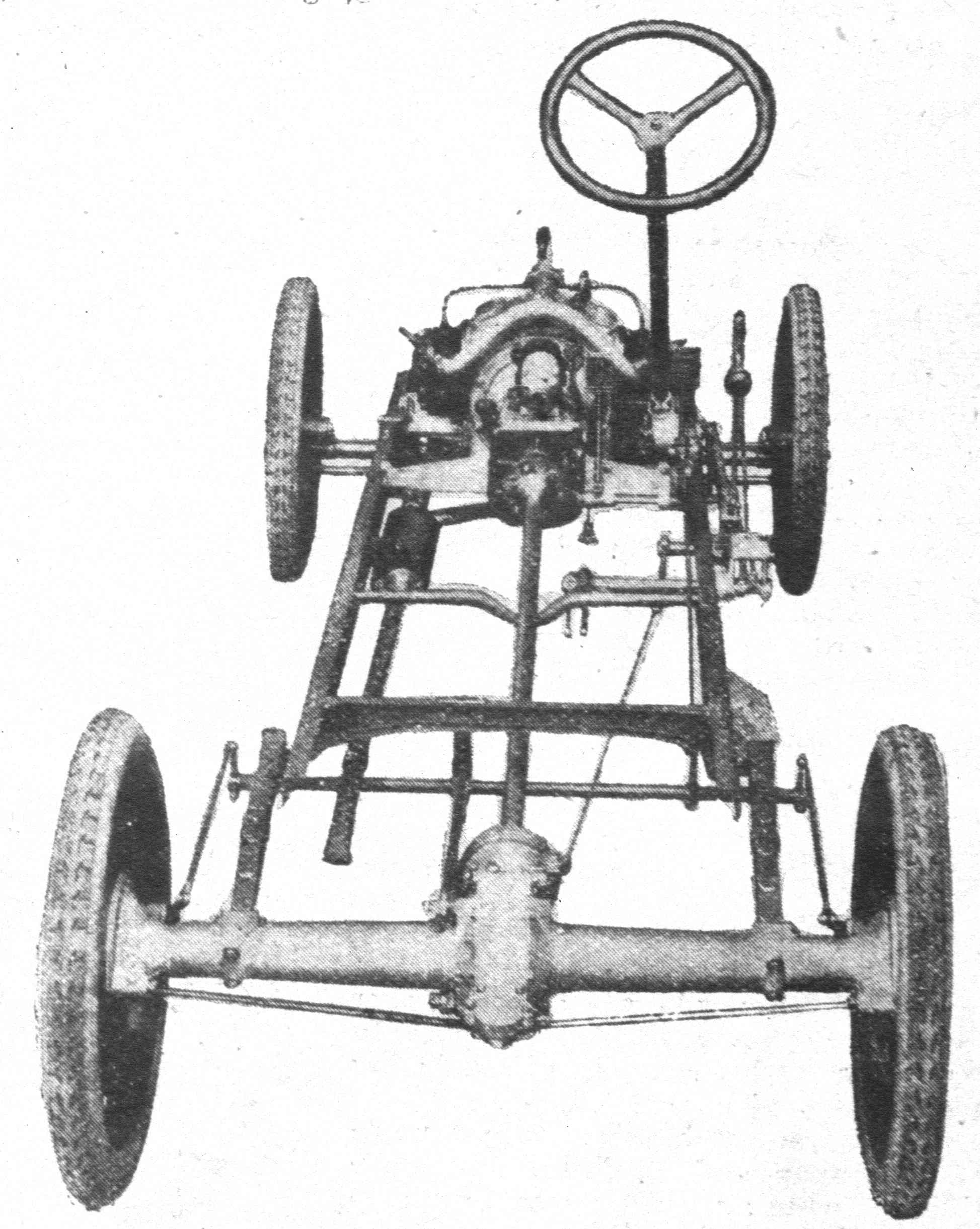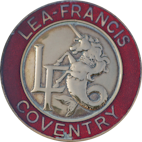
Lea & Francis produced a number of prototype motor cars that never made it to the market place.
Some were quite peculiar in design, although the work ultimately led to the first succesfull Lea-Francis motor car, the C-Type
Air-cooled twin prototype
Sometime between between 1919 and 1922, R H Lea designed a car based on the twin-cylinder air-cooled engine by Weaver. The Coventry Victor Vibrationless Twin, as the engine was known, drove a Sturmey-Archer three-speed gearbox by chain. The whole design was intended to have as low a centre of gravity as possible with the chassis constructed such that the cross member was below the prop-shaft - much as per later hot-rod practice. A solid rear-axle was driven by a bevel gear. A body was fitted by Vulcan and the car was used by Alan, son of R H Lea, for 18 months before being sold to an employee at Daimler, Alfred Blundell. The car has not survived.
Oil-cooled twin prototype
After the air-cooled twin-cylinder powered car, R H Lea worked with Alderson, designer of the 11.9hp car, to produce a car using a Bradshaw horizontally opposed twin-cylinder engine of 690cc. The unit was oil-cooled, but assisted by a flywheel cast with an integral fan and fitted to the front of the engine. The engine was mounted in a conventional chassis frame and drove a four-speed gearbox. The Autocar of 27 October 1922 suggested the car was the smallest available to be fitted with a four-speed gearbox, something it welcomed, pointing out that small engines benefited most from such provision. The rear-axle consisted of a two aluminium-castings bolted together at the centre, in common with all Lea-Francis cars built from then until the end of 1936. Both front and rear springs were quarter-elliptics. The foot-brake operated brakes on the rear wheels only and the handbrake acted on the transmission by way of a drum mounted on the nose of the rear-axle. The radiator, although aesthetic only, the engine being oil and air-cooled, was important as its style and shape were to become the standard for all Lea-Francis cars but one built at the Lower Ford Street works. Rather confusingly, this prototype was one of three Lea-Francis models to be classified as a C type.
Exhibited at the 1922 Olympia Motor Show with a price of £190 this prototype was never sold and has not survived.
C type prototype
Arthur Alderson, who had designed the 1919, 11.9hp car, was responsible for the design of what was to be a significant landmark in the development of Lea-Francis motor cars. The basic chassis was the same as that used on the oil-cooled twin-cylinder powered prototype, but fitted with semi-elliptic front springs. The engine was the four-cylinder, side-valve, Coventry-Simplex of 1074cc, which was RAC rated at 8.9hp.The engine was connected to a three-speed Meadows gearbox via a cone clutch. The rear-axle ratio was 4.79:1, a ratio available on Lea-Francis cars until production ceased at Lower Ford Street. The front-axle, of tubular design, was rather frail on these cars and was the cause of an accident while the designer, Alderson, was driving R H Lea on a test. This version of the C type was shown at Olympia in 1922. It was priced at £235 with a two-seater and dickey body. The car attracted some interest and a few orders were placed, but it was obvious, not least from the accident referred to above, the car was unfit for sale without redesign. Four cars were completed for dealers’ orders, but were not dispatched.



